Cleaning laminate floors is really important, and not just to make it look great. The laminate surface of laminate floors can become damaged and warped easily without the proper care and protection.
So, cleaning your laminate wood floors needs to be a priority of yours if you want to keep that infamous shine laminate flooring is famous for.
Thankfully, here at the Cleanup Team we have more than one suggestion for how to clean laminate floors effectively, so you're sure to find something below to help you. We'll share our preferred method in detail so you know exactly how cleaning laminate floors should go, and then we'll share some additional tips and tricks to help you if you want to use different cleaning products.
Related Services: House Cleaning, Office Cleaning, Commercial Cleaning, End Of Tenancy Cleaning, Airbnb Cleaning.
Ready to get started? Then join us below!
(We'll explain what all these additional resources are for later on in today's post)
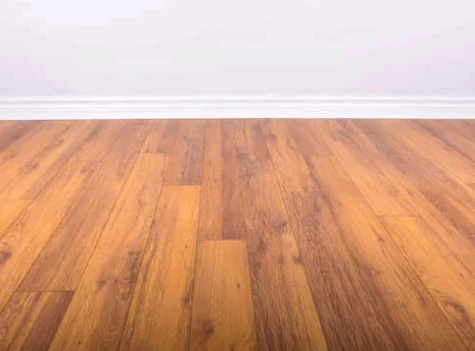
Abrasive cleaners are horrendous for your laminate floor. Whenever you clean laminate flooring, you need to keep in mind that the protective coating along the top of the laminate boards is what gives the laminate its sheen. Harsh cleaners will strip this away and ruin the look of your laminate floor if you aren't careful.
That's why when you clean your laminate floors, you should keep the protective layer in mind, and, if possible, stick to this method. And its secret cleaning product? Hot water.
Yes, that's it...
Hot water (it doesn't need to be boiling, but hot from a tap is brilliant) is the best laminate floor cleaner - without a doubt. It will protect the floor's finish and its relatively low maintenance since it's so easy to clean.
Fill up a mop bucket with hot water and get your microfiber mop head at the ready.
(This type of deep cleaning only needs to take place every few months. See our 'General weekly cleaning tips' section below for information about day-to-day maintenance and cleaning.)
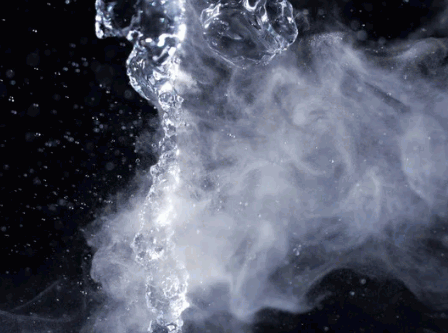
A wet mop is necessary here for a thorough laminate flooring clean - a damp mop is fine for daily cleaning, but when you want to deep clean laminate floors, a thorough soaking is best. With that said, you don't want to leave puddles and you should still wring out the mop before using it to prevent damage.
Simply run your mop over the entire floor. You should notice that no floor polish or floor shiner is necessary here. The hot water alone is enough to keep that shine.
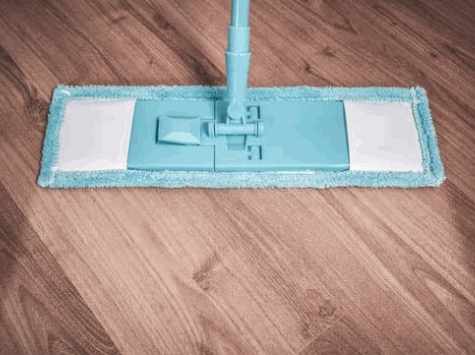
After the laminate floor has been thoroughly cleaned, you must dry immediately. Even a slightly damp laminate floor can start to warp if we leave it wet for too long.
Take a dry mop and run it over the floor. You may need an additional mop head to make doubly sure your laminate floors are dry.
Once dry, you should see that the cleaning solution has worked and your laminate floors look great again!
Although water alone is best, sometimes tough stains need to be dealt with and when you tackle tough stains, water might not be enough.
Still, when you clean laminate floors, you need to keep in mind how sensitive they are to scratches and harsh cleaners, so even with tough stains, you should stay away from things like steam cleaners and steel wool. Instead, you should use mild cleaners like the two options below:
A weak water and vinegar solution is a brilliant hardwood floor cleaner that's suitable for laminate wood floors as well. The key is to keep it weak.
Vinegar is acidic and you don't want it to damage your laminate floors. In a standard 1000ml spray bottle, you should only use around 60ml of white vinegar before topping up the rest with warm water.
You can alter the mix accordingly if ALL your laminate flooring needs a little extra oomph whilst cleaning. A standard mop bucket is around 10 litres, so 600ml of white vinegar would be necessary for the same strength.
So, either spot clean with your spray bottle or mop with your vinegar solution and then clean with just water before you dry thoroughly again. This mild cleaner ought to be enough to tackle most stains. But please remember, the vinegar solution shouldn't sit for long before being taken away or else it can damage laminate floors.
Related Post: How To Clean Bricks With Vinegar
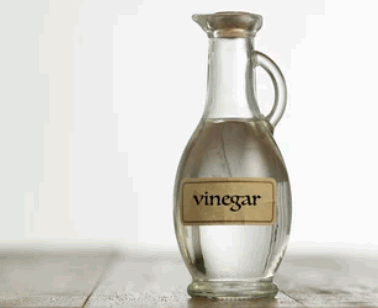
If the vinegar alone isn't enough, then a mild detergent will work just fine for laminate flooring.
Fill your standard 10L mop bucket to around halfway with warm water. Add in around 2 tablespoons of a mild liquid dish soap or detergent to the bucket and mix. Soak your mop and then wring it out before cleaning your laminate floors. Wipe from one side to the other as quickly as possible, so you don't leave the water and detergent on the floor for long. You do not want your laminate floors to remain wet for long. As soon as you're done, dry the floor thoroughly.
The detergent should help remove stains in a gentle way that leaves your floor clean, without risking damage or warping.
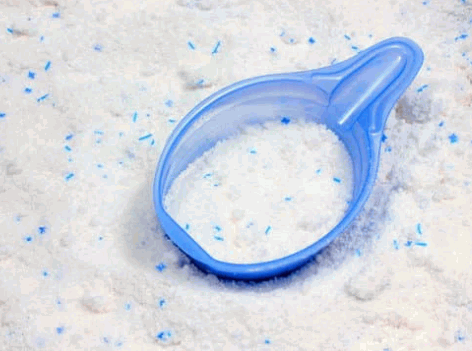
To help with your regular cleaning schedule, here's how you should clean laminate flooring each week to keep on top of the maintenance:
Related Post: How Does Steam Cleaning Work
Of course, sometimes a specific tough stain will need to be dealt with on your laminate floors. Below we'll talk you through how to tackle the most common:
Blood stains are common on laminate floors. Nose bleeds, cut knees, you name it. Blood can fall on your laminate floor and you'll need to deal with it quickly. A soft cloth that's damp could help if you notice the stain quickly enough, but if it's dry, then you will need to use something quite unique: window cleaner.
Related Post: How To Clean Blood From Carpet
Just spray a little window cleaner on the stain and use a damp cloth to wipe away quickly. No other cleaning products are necessary and your laminate floors should be stain free!
Related Post: Cleaning Blood & Body Fluid Spillage
Related Post: How To Remove Dried Blood Stains

Chewing gum is such a problem on laminate floors, and when it dries on laminate, it is not easy to remove, especially if you try pulling it up with your hands and most of it gets left behind. Thankfully, there is a method for removing gum that is a lot simpler and all the gum should be removed.
The secret? A plastic knife. NEVER use a metal knife for this as it will scratch the laminate, but a plastic knife is tough enough to remove the gum in one go, but without damaging the floor. After the gum is gone, use a damp cloth to remove any residue.
Additional tip: This method works brilliantly for candle wax too. Just leave the candle wax to harden and then remove using the same method above.
Wine should be cleaned immediately after a spill. A microfiber cloth with deal with an initial spill. Just dampen it slightly and it will be fine. For dried wine stains, use a little detergent and a damp cloth to remove it.
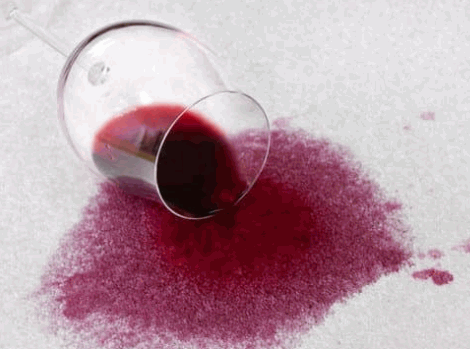
Crayon and pen marks may be a little more difficult to remove. Mineral spirits will help, as will ink remover and a little elbow grease. Rubbing alcohol is also great for crayon and pen marks (and shoe polish too, incidentally) because the rubbing alcohol will break down the stain. After using any of the products above, make sure you clean the area with water to make sure the product doesn't sit for too long and affect the laminate.

Nail polish on bedroom laminate floors is a very common stain, especially in teenagers' rooms, but there's no need to worry. Simply hand your teen some nail polish remover to get rid of the polish, and then tell them to wipe over the area with a damp microfiber cloth.
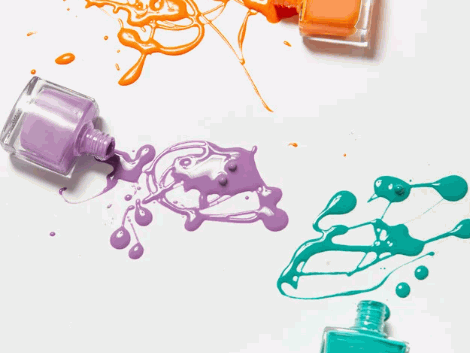
Scuff marks are SO common. Whenever we drag furniture on laminate floors, furniture legs and table legs scrape along the floor and scuff it, leaving behind those annoying black marks. Shoes can leave these marks on the floor too. The fix is simple though - a pencil rubber. Gently scrub the rubber over the area and it'll erase the marks with ease.
Grease stains from food are common in any dining room with laminate floors. To remove these grease marks, you simply need to use ice to freeze it. A plastic bag of frozen veg or an ice pack will do just fine. Place it on the grease until it hardens, then scrape with a plastic knife. A little detergent and a damp cloth will take care of the residue and the grease will be gone.

Here at the Cleanup Team we know a thing or two about cleaning laminate floors (and floors of all types, as it happens) and we hope today's post has been enough to help you deal with your laminate floor yourself at home. But if you are struggling and our advice today hasn't helped, don't worry just yet. You still have one more option: hiring the pros.
We have multiple methods that can deal with deep cleaning laminate floors, so if you require assistance, take a look at our services today. We'd be more than happy to help you get your house back in order!